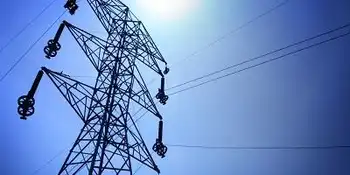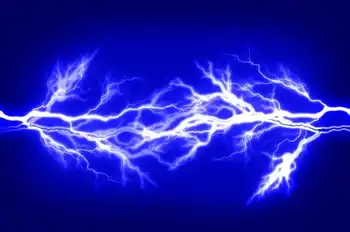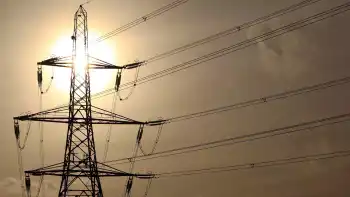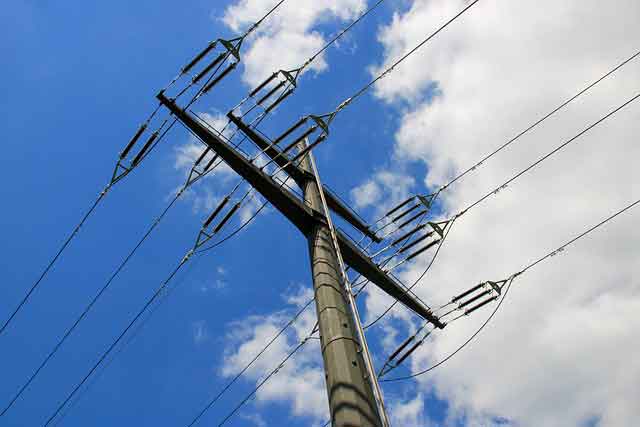Canadians not buying into green technologies
By CBC News
CSA Z462 Arc Flash Training - Electrical Safety Essentials
Our customized live online or in‑person group training can be delivered to your staff at your location.

- Live Online
- 6 hours Instructor-led
- Group Training Available
The U.S. could cut its greenhouse gas emissions in half by 2030 at a negligible overall cost and by using existing technologies, prominent New York-based research firm McKinsey & Company said in its report “Reducing U.S. greenhouse emissions: how much at what cost?”, released earlier this month.
Commissioned by Shell, Pacific Gas & Electric, electronics manufacturer Honeywell, DTE Energy, and advocacy groups Environmental Defense and the U.S. Natural Resource Defense Council, the report says such gains could be achieved by spending just 1.5 per cent of new economic investment, since most of the expenses of going green would later pay for themselves. In order of importance, the report outlines the following areas in which companies could be taking action: • By improving the efficiency of electrical generation and using alternatives to dispose of the gases it produces (reducing greenhouse gas emissions by 1,670 megatonnes by 2030).
• By making commercial and residential buildings (and the appliances in them) more efficient (870 megatonne reduction).
• By using more fuel-efficient vehicles and increasing the use of biodiesel (680 megatonnes).
• By increasing the carbon-absorbing capabilities of carbon sinks, natural features that absorb carbon emissions (590 megatonnes).
Canada has an economy and infrastructure similar to (and linked to) those of the U.S., but when it comes to taking action on the issues highlighted in the report, there is initial reluctance evident in this country.
The report recommends an increased focus on alternative (non-mainstream) forms of electrical generation — an area where Canada is generally keeping pace with the U.S. It also recommends an increase in the production of nuclear energy and a decrease in the use of coal power. Ontario relies heavily on coal power and the provincial government promised to phase it out by 2007, but it has since delayed action. It now promises to close its Nanticoke generating plant — the largest coal-powered plant in North America and Canada's largest producer of greenhouses gases, according to the Ontario Energy Ministry — in 2009 and has no timetable for closing its other plants.
"Ontario has delayed that plan three or four times because they have no replacement power sources in place," said Bob Stobbs, executive director of the Canadian Clean Power Association, a coal industry lobby group.
Epcor, an Edmonton-based power corporation, is building a new coal-power plant in Alberta called Keephills 3, one year after putting its new Genesee 3 coal plant online. According to Stobbs, coal is still a popular fuel because it's inexpensive, alternative fuels have yet to prove cost-efficient and there are many concerns about the disposal of nuclear waste.
That's not to say that nuclear is the only way to go. The McKinsey report did say that coal power is acceptable if power plants use carbon capture and storage (CCS). The theory is that if greenhouse gases can be trapped and segregated (much like nuclear waste), they can't damage the atmosphere. The problem is that while the technology is there, it isn't being used on a large scale.
"In Norway, they pump the waste to the sea bed, where the pressure dissolves the carbon dioxide," said Stobbs. "Here in North America, the plan is to pump it into saline aquifers — underground deposits of salt water — but nobody is doing it yet."
Pumping liquid carbon dioxide underground would hardly set precedent here.
"There's a tradition of pumping it down into half-empty oil fields or natural gas deposits to help liquefy what's down there to make it easier to get," Stobbs said. "There's no reason it couldn't stay down there — we have the technology, but nobody has committed to it."
The building sector has also been slow to change.
"We offer environmentally friendly options, but people generally don't want to pay for them," said an Ontario homebuilder who did not want to be identified.
The reason people won't go green is not hypocrisy, he said, but a desire to keep the up-front costs of a building down.
"When we build a house for a firm, they try to use the least expensive options as possible because they don't have to pay the utility bills after the house is sold," he said. "And when we build for individuals, they are suspicious of more expensive green options; as soon as you show them something a little more expensive, they think you are trying to scam them."
He gives the example of a more efficient washer and dryer combination he offers. "It will cost $400 more, but amortized over a mortgage, that's really negligible. And, if you use less energy, your bills are lower. It eventually pays for itself — but people don't want to hear that."
While higher fuel costs have pushed Canadians to more fuel-efficient vehicles, Canada lags behind most developed countries when it comes to biofuels — alternatives to fossil fuels that are made from organic material. Canada is the only G8 country that does not regularly sell biodiesel at the pumps, for example.
Toronto Hydro switched its entire diesel fleet to biodiesel in 2005 with no mechanical changes to its vehicles, and it has experienced no increase in maintenance costs, according to Renzo Cacciotti, the utility's supervisor of fleet assets.
"The fuel, which we get from an independent supplier, costs a bit more. But we get it back in better fuel economy," said Cacciotti.
But switching to alternative fuels such as biodiesel or ethanol-based fuel doesn't guarantee greenhouse gas savings. Environmental advocates warn that making alternative fuels with certain crops is ineffective.
"Agrofuels aren't a bad thing, but getting involved in the culture of corn ethanol is," said Eric Darier, agricultural campaigner for Greenpeace Canada.
Corn, he said, isn't a very efficient biofuel crop because of the amount of fossil fuel, water and other forms of energy used in production. Yet because of the U.S. corn surplus, it's the most commonly used biofuel crop in North America. Using food crops for fuel can also cause dangerous imbalances in the supply and prices of foods.
"If the U.S. were to make all of their fuel 20 per cent corn ethanol, it would take their entire crop," Darier said. "And Mexico is already experiencing sharp increases in the prices of corn-related items because of ethanol already in the market."
This is an area where Canada could be leading the green energy movement. Sugar cane and canola are among the more efficient biofuel crops. Darier recommends switchgrass, which is considered a weed in most of Canada.
Carbon dioxide sinks could be created or improved through better forestry and farming practices, reducing the effect of greenhouse gases on the climate, Darier said.
"Soil in very good condition in terms of diversity and microlife retains carbon very well," he said. "But erosion can actually cause soil to emit carbon, so better farming practices could dramatically help reduce carbon dioxide in the atmosphere."
While the recommendations in the McKinsey report all use existing technologies, selling the ideas to Canadians and putting them into practice continues to be a difficult proposition.
As the Ontario homebuilder puts it: "Yeah, it'd be great if people would go as green as they say they want to, but they aren't, really."











